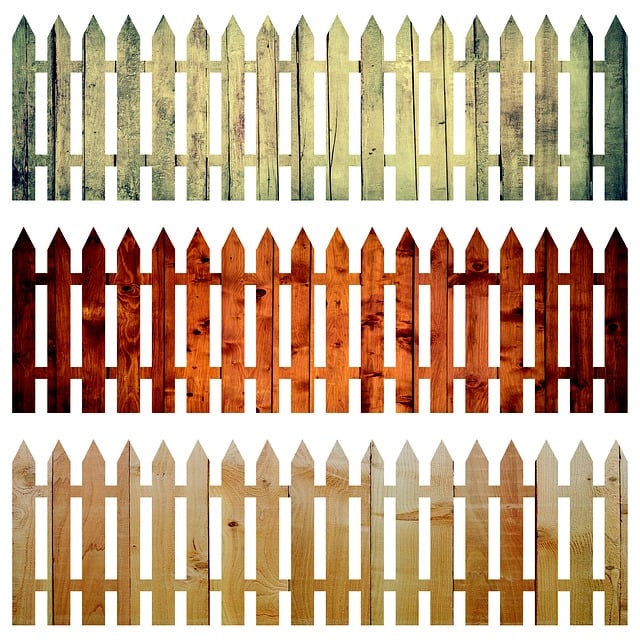Installing a fence can enhance your New Bedford, Massachusetts property’s curb appeal and provide both privacy and security. This comprehensive guide equips homeowners with the knowledge and step-by-step instructions to tackle this project successfully. From planning your fence’s design and selecting durable materials to gathering essential tools and applying professional finishing touches, we’ve compiled a detailed toolkit for DIY enthusiasts looking to install a strong and long-lasting barrier that complements their home’s unique character.
- Planning Your Fence: Measure and Design
- Materials for a Sturdy New Bedford Fence
- Tools Needed for Installation
- Step-by-Step Guide to DIY Fence Building
- Tips for a Professional Finish
- Maintenance and Longevity of Your Home's Fence
Planning Your Fence: Measure and Design
Before installing a fence, New Bedford homeowners should start with meticulous planning. The first step is to measure your desired fence area accurately. Use measuring tape to check existing boundaries and decide on the length and height of your fence. This information will guide you in selecting the right materials and ensuring compliance with local building codes.
Once you have your measurements, design your fence by sketching a rough plan. Consider factors like where the gate(s) should go, any specific style or aesthetic preferences, and functional requirements. A well-planned design will make installation easier and more efficient, resulting in a longer-lasting, aesthetically pleasing fence.
Materials for a Sturdy New Bedford Fence
When planning to install a fence in New Bedford, Massachusetts, selecting the right materials is crucial for ensuring sturdiness and longevity. Start by choosing a robust fencing option such as high-quality wood or durable vinyl. For wood, opt for treated options like cedar or pressure-treated pine, which are resistant to rot and insects. Vinyl fences offer low maintenance and come in various styles and colors to suit different preferences. Reinforcing your fence with the right posts is also essential; concrete-filled metal posts provide excellent stability and can withstand harsh weather conditions. Don’t forget the importance of strong connections; use galvanized chains, brackets, and fasteners to secure panels firmly.
Tools Needed for Installation
When it comes to DIY fence installation, having the right tools is half the battle won. For a typical fence project in New Bedford, Massachusetts, you’ll need a good set of basic tools and equipment. Start with a hammer or an impact driver for driving posts into the ground. A measuring tape is essential for accurate measurements, ensuring your fence lines up perfectly.
Don’t forget about hand tools like a level (to ensure posts are straight) and a string line (for guiding post placement). You’ll also require a post-hole digger or an excavator to create the necessary holes. For cutting and shaping materials, a circular saw or reciprocating saw is handy, especially when working with wooden fence components. Lastly, don’t underestimate the power of a good set of work gloves and safety goggles for protection during the installation process.
Step-by-Step Guide to DIY Fence Building
Building a fence yourself can seem daunting, but with proper planning and clear steps, it’s an achievable project for New Bedford homeowners looking to enhance their outdoor space. Here’s your DIY fence-building guide:
1. Plan Your Fence Layout: Start by determining where your fence will be installed and measuring the perimeter of the area. Decide on the height and style of the fence that best suits your needs and property lines. Gather all necessary materials, including posts, rails, brackets, and fencing panels, according to your measurements.
2. Prepare the Ground: Clear a wide path where you want the fence to stand, removing any grass, weeds, or debris. Dig holes for the fence posts using a post-hole digger, ensuring they are deep enough (typically one-third of the post’s height) and spaced evenly apart. Pour concrete into each hole to secure the posts in place, allowing it to dry completely before proceeding.
Tips for a Professional Finish
For a professional finish, pay close attention to the details during installation. Start by ensuring all components are properly aligned and securely fastened. Use high-quality fasteners suitable for outdoor conditions to prevent rusting or loosening over time. Regularly check connections and tightening as you work to maintain structural integrity.
Next, consider the finishing touches. Apply a coat of exterior paint or sealant to protect the fence from weather damage and enhance its aesthetic appeal. Choose colors that complement your home’s exterior or nearby landscapes for a cohesive look. Take your time to create clean lines and even coats to achieve a polished, professional finish that will stand the test of time.
Maintenance and Longevity of Your Home's Fence
Regular maintenance is key to ensuring your fence not only looks good but also lasts for many years. This includes cleaning and inspecting it regularly, especially after harsh weather conditions or seasonal changes. A simple pressure wash can help remove any built-up dirt or debris, while a quick check for loose posts, damaged panels, or rot can prevent small issues from becoming big problems.
Painting or staining your fence periodically is another crucial step in maintaining its longevity. This protective layer not only enhances its aesthetic appeal but also shields it from the elements. By keeping up with these routine tasks, you’ll be able to enjoy a robust and visually appealing fence for years to come.
